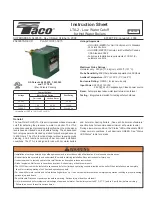
The aggressiveness of the condensate created whilst condensing the
hot gases depends largely on the sulphur content of the fuel. The less
sulphur the fuel oil contains, the less sulphuric acid and sulphurous
acid is produced during combustion. For this reason, operate the Vito-
ladens with low sulphur fuel oil DIN 51603-1 EL or fuel oil DIN 51603-6
EL A Bio 10.
According to DIN 51603-1 and the third BImSchV [in Germany], fuel
oil is described as "low sulphur", when its sulphur content is no greater
than 50 mg/kg (50 ppm). It is then described as "low sulphur fuel oil
DIN 51603-1 EL".
Using this low sulphur fuel oil (or fuel oil with an even lower sulphur
content) according to Code of Practice ATV DVWK A 251 enables
operation without a condensate neutralising system in the output range
up to 200 kW.
Biofuel and additives
Fuel oil DIN 51603-6 EL A Bio 10, i.e. low sulphur fuel oil EL with up
to 10% bio-components (FAME) added is permissible.
Fuel oil additives are recommended if they offer the following charac-
teristics:
■ Improvement of stability during fuel storage.
■ Improvement of the thermal stability of the fuel.
■ Reduction of odour development during filling.
■ Combustion free from residues.
Combustion improvers that leave residues are not permissible.
Oil supply
The oil supply of the Vitoladens
must
be implemented as a single line
system.
Always install an R
⅜
fuel oil filter with return feed line (filter with air
vent valve connected between the return connection and the suction
line) in the oil supply system. Filter grade max. 40 µm, recommenda-
tion: Filter grade 5 µm. We recommend the use of a large filter bowl
with large filter element. When installing a single line filter, we recom-
mend you use an automatic fuel oil vent valve that should be installed
between the fuel oil filter and the burner (available as accessory).
Size the oil line in accordance with the following table, observing the
oil line requirements to DIN 4755-2 [or local regulations].
The height differential H (see fig.) between the oil burner pump and
the foot valve in the tank set below the oil burner pump must not exceed
4 m. Greater height differentials lead to noisy operation and pump
damage.
An oil feed pump with intermediate tank is required in the immediate
vicinity of the Vitoladens, if the suction head or maximum pipe run for
tanks installed lower than the burner is greater than that shown in the
following table. Oil must be able to be supplied from the intermediate
tank using the integral oil burner pump.
The oil supply pump must be regulated independently of the Vitola-
dens, i.e. no signal from the Vitoladens must be used for this pur-
pose.
The oil line should have a vacuum pressure not exceeding 0.35 bar.
Where a tank is installed higher (level foot valve or floating inlet higher
than the oil pump), install no mechanical anti-lift valves. Instead, use
an electric solenoid valve with control via the "external fuel valve con-
necting line" (accessories).
Vitoladens 300-W
Install the fuel oil filter at the height of the lower edge of the boiler and
as near as possible to the boiler, to ensure the oil hoses are long
enough when removing the burner.
The fuel oil filter may be fitted either on the r.h. or l.h. side of the boiler
to suit local conditions.
H
A
C
B
A
Fuel oil filter with fuel oil vent valve
B
Safety equipment to prevent lifting out (anti-lift valve)
C
Foot valve
Vitoladens 333-F
Fit a fuel oil filter in accordance with the diagram on the l.h. or r.h. side
of the boiler.
≤600
H
A
Fuel oil filter with fuel oil vent valve
B
Safety equipment to prevent lifting out (anti-lift valve)
C
Foot valve
Design information
(cont.)
VITOLADENS 300-W
/
VITOLADENS 333-F
VIESMANN
49
5822 425 GB
5
















































